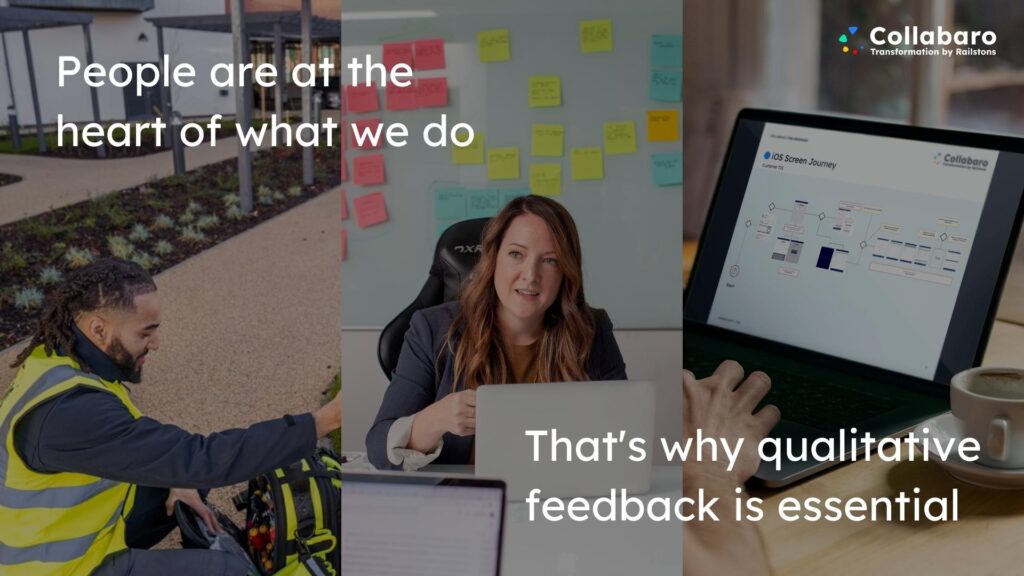Collabaro is a product and service designed using an approach that has always to been user-centric from the beginning. We are interested in our customer’s unique situation and are with them on every step of the digital transformation journey. We think it is important for our design application to consider each end user, their needs, pain points and experience. The design of our service goes beyond singular product focus, but assesses every touchpoint and interaction our customers have with us. In order to apply this methodology, it is important to conduct qualitative research, spend time with our users and truly grasp what they need from us at every level.
Process
We are grateful to TIS for their support and cooperation, allowing us to spend time with their Collabaro end users in order to gather invaluable qualitative user feedback against both our product and overall service.
Observation & immersion
Through the processes of observation, immersion and user interviews we have been able to collect first hand research that will feed directly into strategic design decisions going forward. Firstly we spent a day with iOS users, field engineers both senior and apprentice level, as they attended maintenance projects and site visits. We then spent a day with web app users, administrative teams at various levels, involved in each stage of the project process. We planned in time for simple observation to witness user actions in their natural environment, highlight spontaneous behaviour without influence and spot patterns. We then engaged with the users directly in interviews and through immersion, following a job from conception to completion. This drew in-depth insight into the overarching user journey, helping us to identify the most pressing pain points and opportunity spaces.
Analysis
From the research gathered combined with our previous internal work building on persona profiles and user journeys, we were able to fill in blind spots as well as add additional nuances explored through the immersive experience. We have been able to outline in much more detail our different user’s needs, pain points as well as confirm our own assumptions, desk research findings and opportunities. Overall, this has been collated into a comprehensive document and internally fed back to our team who are using it to influence development priorities and direction.
Outcome
The qualitative research undertaken is already being used to support design and development decisions being made. Our intention is to continue to support our customers along the entire service journey and use these findings to influence proposed strategies that remain customer centric and directly attend to their needs at each touchpoint.
